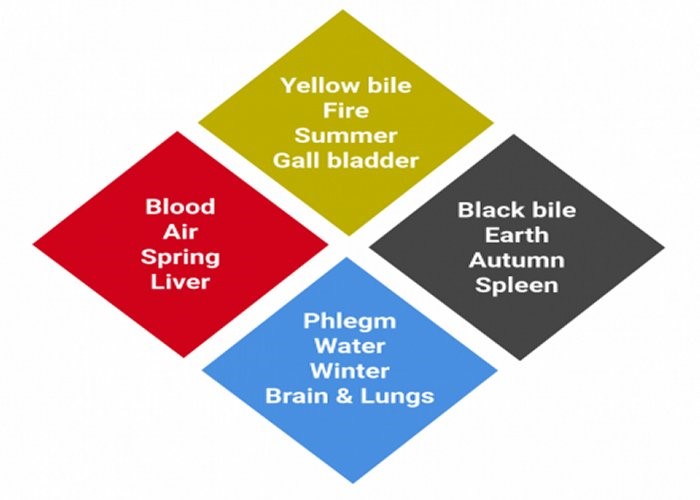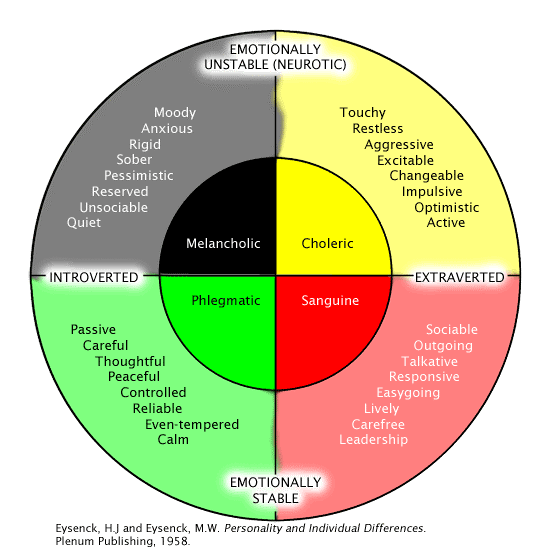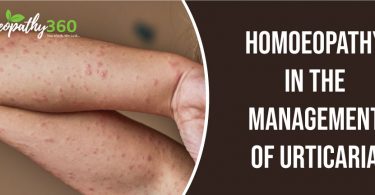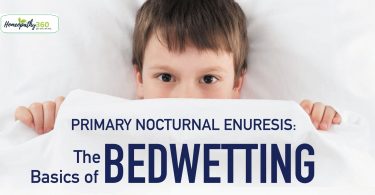
ABSTRACT: – Homoeopathy is based on individualization i.e. every individual is different from each other. The manner of acting, thinking, behaving and reacting to surrounding is distinct from others. To individualize the person, it is necessary to understand the constitution of the person i.e. his physical and mental make-up. Temperament is an important component of a person’s personality. Temperament provides us information about basic personality trait and different predisposition tendencies of every individual thus, the temperament has a vital role in homoeopathic prescribing. From several clinical researches, it’s evident that temperament helps in selecting similimum.
KEY WORDS: – Temperament, Homoeopathy, Individualization, Sanguine, Phlegmatic, Choleric, Melancholic
INTRODUCTION: –
Temperament originated from Latin word “temperare” which later known in Latin temperamentum and in English “temper”. Temperament is the “real me, an innate character, inborn nature”.1
Temperament is the peculiar combination of bodily, mental and moral attributes that together shape the character of an individual and influence his way of acting, feeling and thinking.2 According to homeopathic literature, no two persons are the same, each one is different from the other. Their constitution, their psychological and bodily makeup, their way of reacting to stimulus, their way of thinking is different.
It is a typical phenomenon of the individual’s emotional nature, his predisposition to emotive stimulus, his responses, the quality of his prominent emotional gestures, and all uniqueness in the variability and intensity of mood.
Temperament is an important part of the person’s constitution, as it occupies great importance in homeopathic prescription. Homeopathy is a system of holistic approach and the patient is therefore treated by choosing a similimum. Individualization is the fundamental principle for the selection of similimum. Treating each patient and achieving healing in a distinct way because every individual is different from each other.
EVOLUTION OF TEMPERAMENTAL THEORY: –
“No knowledge is perfect unless it includes an understanding of origination – that is beginning and as all men’s disease originate in his constitution, it is necessary that his constitution should be known if we aim to know his disease” – Paracelsus.3
The classical theory of humours put forth by Hippocrates (460BC). He believed that certain human moods and emotions were caused by body fluids (called humours)- Blood, Yellow bile, Black bile and phlegm. Excess or deficiencies of these humours causes the illness. Later on, Galen projected a temperamental theory constructed on Hippocrates observations. The origin of the theory can be traced to four sources that preceded Hippocrates: –
- A medical tradition that regarded the humours as a cause of illness
- Principles of Pythagorean philosophy concerning harmony, balance and tetrads
- Empedocles theory of primary elements of the universe
- The doctrine of qualities that evolved when the theory of elements was applied to mankind.4

(Fig: 1.The four humours in Hippocratic medicine with the associated organs combined with Empedocles’ four elements, the seasons)
HIPPOCRATIC THEORY OF HUMORS:5 –
| Humor | Element | Organ |
| Yellow bile | Fire | Liver |
| Black bile | Earth | Spleen |
| Phlegm | Water | Brain |
| Blood | Air | Heart |
Hippocrates attempted to identify the basic constituents of the human body. He therefore established the existence of four basic humors, per the four basic elements of the universe and the four secreting organs: –
The harmonious mix of these humors maintains the healthy states. Therefore, excess or deficiency of these humors cause the pathophysiology of disease. The state of harmonious mixing of the humors is called Eucrasia whereas humor imbalance is called as Dyscrasia.
HUMORS AND HUMAN BEHAVIOR:5 –
Hippocratic medicine is not limited to the disease of the body but also makes sure to study the human personality. In this context, Hippocrates supported the view that the ratio of the humors in the human body greatly influences the temperament, leading to four basic types of people and behavior: –
| HUMOR | ORGAN | TEMPERAMENT | FEATURES OF CHARACTER |
| Blood | Heart | Sanguine | Courageous, hopeful, care free, playful |
| Yellow bile | Liver | Choleric | Ambitious, leader, easily angered, restless |
| Black bile | Spleen | Melancholic | Despondent, quiet, serious, analytical |
| Phlegm | Brain | Phlegmatic | Calm, thoughtful, peaceful, patient |
Table 1. correlation between humors, organs and temperaments; shows that human physiology has a major impact on human behavior5
Thus, humor proportions do not only contribute a health state but also indicates the character types. Hippocrates also support the view that environmental factors may also impact the human temperament; both the temperament and the mood of the inhabitants of a particular region are subject to change by factor such as ambient air, its weather and its general conditions.
THE FOUR CLASSICAL TEMPERAMENTS: –
There is a diversity of opinion among psychologists concerning the classification of temperament. As a matter of fact, individuals generally manifest a combination of several temperaments, but one or another will usually predominant. The four classical temperaments are: – sanguine, melancholic, choleric, phlegmatic.
- SANGUINE: – sanguine person is generally optimistic, cheerful, even-tempered, confident, rational, popular, and fun-loving. He is obedient and easily taught. Willing to oblige, he submits easily to superiors. Because a single impression doesn’t last long for this temperament, it is quickly followed by the next, then the next, and so on. Views can change rapidly as well as moods and resolutions.
- MELANCHOLIC: – The melancholic temperament is weak as his response to stimulus, and it is difficult to arouse; however, after repeated impacts the reaction is strong and lasting. Loves solitude and is often productive in solitary hobbies encloses the fine arts, liberal arts, crafts, writing, analytics, drama, contributing deep and profound thoughts. The melancholic is a passive temperament. The person possessing such a temperament, therefore, has not the vivacious, quick, progressive, active propensity but is slow.
- CHOLERIC: – Choleric persons are dynamic, self- motivated leader, who can set sights on a target and relentlessly pursue it until success is achieved, an extroverted “leader” type who, in the area of control, has a high need to control others, but a low tolerance of others controlling him. He is a strong-willed individual who makes decisions quickly and decisively, and who readily and easily grasps difficult concepts and strategies.
- PHLEGMATIC: – The phlegmatic is rarely aroused emotionally and, if so, only weakly. The impressions received usually last for only a short time and leave no trace’. The good characteristics of phlegmatic persons are that they work slowly but attentively; they are not easily irritated by insults, misfortunes, or sickness; they usually remain calm. They are friendly, patient, contented and peaceful people. He is consistent with life and well balanced. He is calm, easy going.6

(Fig. 2. The four temperament types of Hippocrates)
IMPORTANCE OF TEMPERAMENT IN HOMOEOPATHY: –
Dr Von Boenninghausen: – made it clear in his writing that it is important to assess the physical constitution, mental temperament and predispositions during case taking. Dr Boenninghausen wrote following understand the title “QUIS”, which means who.7 QUIS” as a matter of course the personality, individuality of the patient must stand at the head of the image of the disease for the natural disposition rest on it.
Dr. H. A. Robert’s View:- He says, temperaments are to a very large extent physiological, but besides the stature of the patient the matter of temperaments implies colouring, functional tendencies of circulation, elimination, respiration and so on, and at the same time mental and emotional tendencies in reaction to environment and circumstances.8
Dr. Stuart Close’s View: – In his book the ‘Genius of Homoeopathy’ explains in detail about the potency suitable for different temperaments. He says that, the higher potencies are best adapted to sensitive persons of the nervous, sanguine or choleric temperament.9 Lower potencies and larger and more frequent doses correspond better torpid and phlegmatic individuals dull of comprehension and slow to act.
REPERTORIAL PRESENTATION OF TEMPERAMENT: –
REPERTORY OF HERRING GUIDING SYMPTOMS OF OUR MATERIA MEDICA– CALVIN B. KNERR10:
[Stages of Life And Constitution] TEMPERAMENT: Melancholic(hypochondria): Acon Anac AUR Aur -m Bell Bry Calc Chin Cocc Colch Graph IGN Lach Lil-t Lyc Murx NAT-M Plat PULS Rhus-t Stram Sulph Verat
[Stages of Life and Constitution] TEMPERAMENT: Phlegmatic (indolent, slow, torpid): Aloe Am-m Ant-t Bell Calad CALC Caps Chin Clem Cocc Cycl Dulc Ferr-p Hep Kreos Lach Merc Mez Nat-c Nat-m PULS Seneg Sep
[Stages of Life and Constitution] TEMPERAMENT: Sanguine:
Acon Ars Aur Calc Cham Chin-s Coff FERR HYOS Ign Murx Nit-ac Nux-v PHOS Plat
[Stages of Life And Constitution] TEMPERAMENT: Choleric (irritable inclined to anger): (23) Acon Ars Aur BRY Carb-v Caust CHAM Coff FERR Hep HYOS Kali-p Kalm Lach Lyc Nat- m Nit-ac NUX-V Phos Plat Sec Sil Sulph
COMPLETE REPERTORY: –11
[Complete] [Generalities]CONSTITUTION: Sanguine: (23)
3 Acon, 3 Arn, 1 Ars, 3 Aur, 3 Calc, 3 Cham, 3 Chin-s, 3 Coff, 4 Ferr, 1 Glon, 4 Hyos, 3 Ign, 1 Led, 2 Murx, 3 Nit-ac, 3 Nux-v, 2 Petr, 4 Phos, 1 Plat, 1 Ruta, 2 Sac-alb, 2 Tril, 1 Verat-v
[Complete] [Generalities]CONSTITUTION: Choleric (72)
3 Acon, 1 Am-c, 1 Anac, 3 Apis, 1 Ars, 4 Aur, 3 Bar-c, 1 Bell, 1 Brachy-s, 4 Bry, 1 Bufo, 1 Calad, 3 Calc, 1 Cann-s, 1 Canth, 1 Caps, 3 Carb-v, 3 Caust, 4 Cham, 3 Chin, 1 Cocc, 1 Coff, 3 Coloc, 1 Con, 1 Croc, 1 Cycl, 1 Dios, 1 Dros, 4 Ferr, 1 Hell, 3 Hep, 4 Hyos, 1 Ign, 1 Iod, 4 Ip, 3 Kali-c, 1 Kali-p, 3 Kalm, 3 Lach, 3 Led, 4 Lyc, 4 M-aust, 3 M-p-a, 1 Merc, 1 Mez, 3 Mur-ac, 3 Nat-c, 4 Nat-m, 3 Nit-ac, 3 Nux-m, 4 Nux-v, 4 Olnd, 1 Op, 3 Petr, 4 Phos, 3 Plat, 3 Ran-b, 1 Ruta, 1 Sabad, 1 Sec, 3 Seneg, 1 Sep, 3 Sil, 1 Spig, 3 Stann, 4 Stront-c, 1 Sul-ac, 3 Sulph, 1 Tarent, 1 Thuj, 1 Verat, 2 Zinc
[Complete] [Generalities]CONSTITUTION: Phlegmatic (86)
1 Agar, 1 Agn, 1 Aloe, 1 Alum, 3 Am-c, 3 Am-m, 2 Anac, 3 Ant-c, 1 Ant-t, 3 Aran, 1 Ars, 3 Asaf, 3 Bad, 1 Bar-c, 3 Bell, 1 Bov, 1 Brachy-s, 1 Brom, 3 Calad, 4 Calc, 1 Calop-s, 4 Caps, 1 Carb-an, 3 Carb-v, 1 Cast, 3 Chin, 3 Clem, 1 Cocc, 2 Con, 1 Cupr, 1 Cycl, 3 Dulc, 1 Ferr, 1 Ferr-p, 1 Gast, 3 Graph, 1 Hep, 3 Hydr, 2 Ign, 3 Iod, 1 Kali-bi, 1 Kali-c, 1 Kali-chl, 1 Kali-
A CLINICAL REPERTORY- J. H. CLARKE: –12
[Clarke] [Temperaments]SANGUINE: Temperament:
1 Acon, 1 Arn, 1 Aur, 1 Coff, 1 Ferr, 1 Glon, 1 Hyos, 1 Ign, 1 Led, 1 Murx, 1 Phos, 1 Ruta
[Clarke] [Temperaments]TEMPERAMENT: Choleric:
1 Coff, 1 Coloc
[Clarke] [Temperaments]TEMPERAMENT: Phlegmatic:
1 Aloe, 1 Asaf, 1 Calad, 1 Chin, 1 Cycl, 1 Dulc, 1 Lach, 1 Mez, 1 Puls, 1 Sarr, 1 Seneg
[Clarke] [Temperaments]TEMPERAMENT: Melancholic:
1 Asar, 1 Lach, 1 Macrin, 1 Murx, 1 Nux-v, 1 Puls, 1 Verat
LIPPE’S REPERTORY: –13
[Lippe] [Generalities, Aggravations and Ameliorations] PHLEGMATIC TEMPERAMENT:
1 Bar-c, 1 Caps, 1 Cocc, 1 Croc, 1 Ign, 1 Lyc, 1 Puls, 1 Seneg, 1 Sil
[Lippe] [Generalities, Aggravations and Ameliorations] CHOLERIC TEMPERAMENTS:
1 Ars, 1 Bry, 1 Cham, 1 Cocc, 1 Lach, 1 Nit-ac, 1 Nux-v, 1 Phos
[Lippe] [Mind and Disposition] MELANCHOLY:
1 Acon, 1 Agn, 1 All-c, 1 Alum, 1 Anac, 2 Ars, 1 Asar, 2 Aur, 1 Bell, 1 Berb, 1 Cact, 2 Calc, 1 Carb-an, 2 Caust, 1 Chin, 1 Clem, 1 Cocc, 1 Croc, 1 Cupr, 1 Cycl, 1 Dig, 1 Dros, 2 Graph, 2 Hell, 2 Hyos, 2 Ign, 1 Ind, 1 Iod, 1 Kali-c, 2 Lach, 2 Lyc, 1 Merc, 1 Nat-c, 2 Nat-m, 1 Nit-ac, 1 Nux-m, 1 Nux-v, 1 Ph-ac, 1 Phos, 1 Plat, 2 Plb, 2 Puls, 2 Rhus-t, 1 Ruta, 1 Sec, 1 Sel, 2 Seneg, 2 Sep, 1 Sil, 1 Staph, 2 Stram, 1 Sul-ac, 2 Sulph, 1 Tab, 1 Til, 2 Verat
SOME HOMOEOPATHIC REMEDIES WITH THEIR RESPECTIVE TEMPERAMENTAL TRAITS: –14
- Chamomilla-: persons with nervous excitable temperament
- Coffea cruda-: persons of sanguine choleric temperament
- Ferrum metallicum-: person of sanguine temperament; pettish, quarrelsome
- Gelsemium-: especially women of a nervous hysterical temperament; of excitable, irritable, sensitive person.
- Glonoinum-: nervous temperament: suitable to sensitive plethoric women
- Hyoscyamus-: individuals of sanguine temperament; who are irritable, nervous, hysterical.
- Ignatia-: especially suited to nervous temperament; women of a sensitive, easily excited nature
- Lachesis-: suited to persons of less melancholy temperament with a disposition to low spirits and indolence and of choleric temperament with freckles and red hair.
- Magnesium carbonicum-: for irritable disposition, nervous temperament especially children
- Mezereum-: for light haired, irresolute persons of a phlegmatic temperament
- Murex purpurea-: persons of melancholy temperament
- Nux moschata-: adapted especially to women and children of a nervous hysterical temperament.
- Nux vomica-: adapted to thin irritable, zealous persons with bilious or sanguine temperament.
- Phosphorus-: adapted to tall, slender person of sanguine temperament.
- Pulsatilla-: adapted to the persons of indecisive, slow, phlegmatic temperament.
- Silicea terra-: adapted to the nervous, irritable, sanguine temperament
- Sulphur-: suited to the persons of quick, nervous temperament.
CONCLUSION: – Temperament helps the physician in observing and understanding the patient’s personality traits so guides us to understand the patient’s tendency and mental status for the selecting similimum. However, no prescription can be made on single symptom; totality of symptoms and individualization must be basis of prescription. The homoeopathic literature and few researches are evident for consideration of temperaments for selecting similimum.
REFERENCES: –
- Tiwari P, Jadhav A B. A study to evaluate the success of remedy selection on the basis of temperament. IJRAR. 2018;5(4). p.-145-149.
- The new oxford encyclopedic dictionary: pip- zym. Reprint ed. Oxford: Bay Books and Oxford University Press; 1983;3. Temperament; p.1723.
- https://www.homeobook.com/role-of-constitution-in-homeopathy/
- Stelmack R M, Stalikas A. Galen and the humour theory of temperament. Person. Individ. Diff. 1991; 12(3). p-255-263.
- Kalachanis K, Michailidis IE. The Hippocratic view on humors and human temperament. EJSB. 2015. 2(2): 1-5.
- Hock Conrad. The four Temperaments. Reprint ed. United States: The Anglican Academy; 2006.
- Boenninghausen Von CMF. The lesser writings. Reprint ed. New Delhi: B. Jain Publishers (P) Ltd; 2003.
- Robert HA. The principles and art of cure by homoeopathy. Reprint ed. New Delhi: B. Jain Publishers (P)Ltd; 2002.
- Close S. The genius of homoeopathy lectures and essay on homeopathic philosophy. Reprint ed. New Delhi: B. Jain Publishers (P) Ltd; 2002.
- Knerr C B. Repertory of Hering’s Guiding Symptoms of our Materia Medica. Zomeo version 13.9.0. Mind Technologies Pvt. Ltd. Mumbai. 2022.
- Zandervort R V. Complete Repertory. Zomeo version 13.9.0. Mind Technologies Pvt. Ltd. Mumbai. 2022.
- Clarke J H. A Clinical Repertory to the Dictionary of Materia Medica. Zomeo version 13.9.0. Mind Technologies Pvt. Ltd. Mumbai. 2022.
- Lippe C. Repertory to the More Characteristic Symptoms of the Materia Medica. Zomeo version 13.9.0. Mind Technologies Pvt. Ltd. Mumbai. 2022.
- Allen H C. Allen’s keynotes. Rearranged and classified with leading remedies of the materia medica and bowel nosodes. 10th ed. 2005. New Delhi. B Jain Publishers (P) Ltd.
ABOUT THE AUTHOR
- Dr. Divya Rani
PGT, Dept. of Organon of Medicine & Homoeopathic Philosophy
State National Homoeopathic Medical College & Hospital, Lucknow (U.P.)
Email id- [email protected]
- Dr. Sachchida Nand Yadav
PGT, Dept. of Materia Medica
State National Homoeopathic Medical College & Hospital, Lucknow (U.P.)
Email id – [email protected]
- Dr. Kirti Mishra
PGT, Dept. of Organon of Medicine & Homoeopathic Philosophy
State National Homoeopathic Medical College & Hospital, Lucknow (U.P.)
Email id- [email protected]





